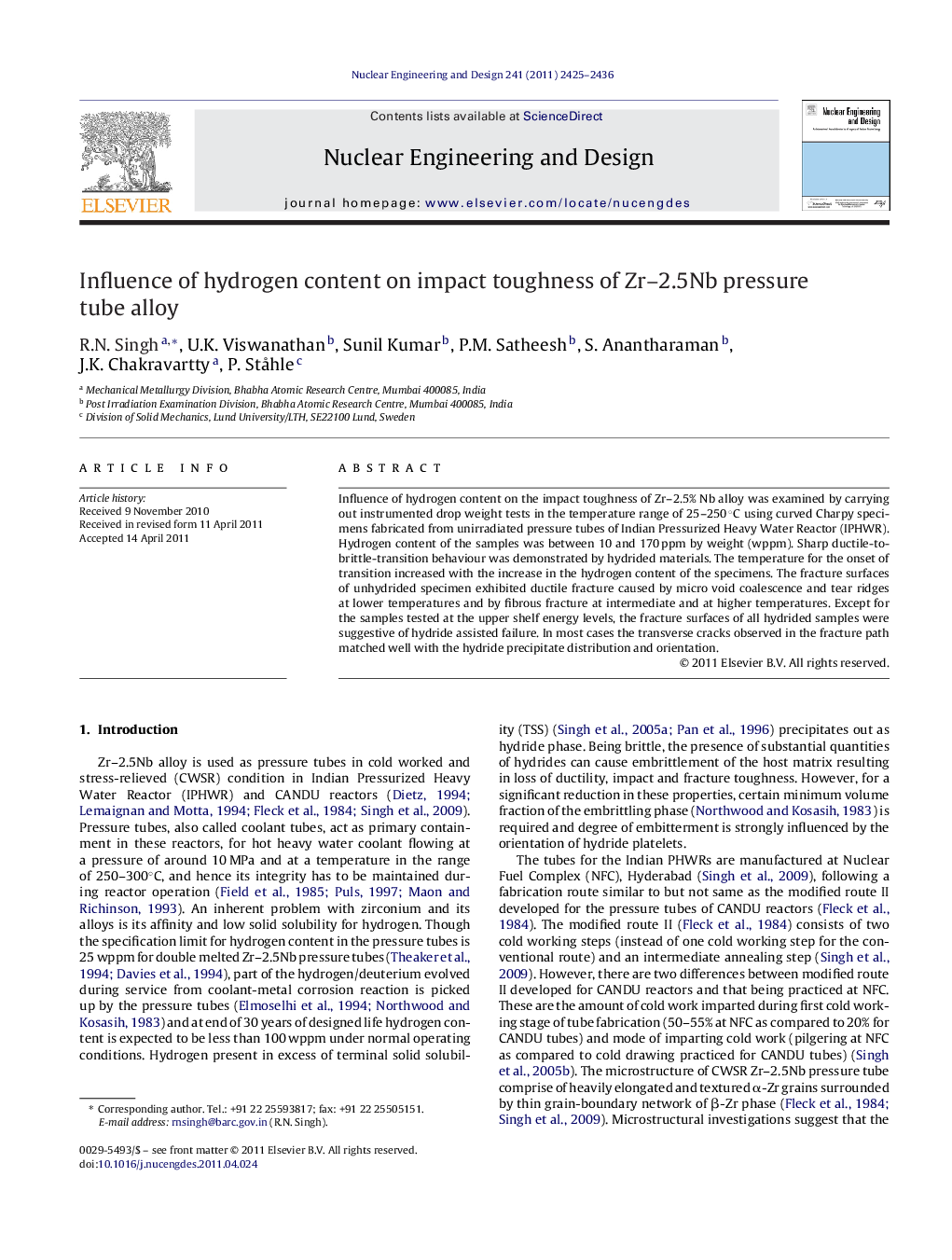| Article ID | Journal | Published Year | Pages | File Type |
|---|---|---|---|---|
| 297543 | Nuclear Engineering and Design | 2011 | 12 Pages |
Influence of hydrogen content on the impact toughness of Zr–2.5% Nb alloy was examined by carrying out instrumented drop weight tests in the temperature range of 25–250 °C using curved Charpy specimens fabricated from unirradiated pressure tubes of Indian Pressurized Heavy Water Reactor (IPHWR). Hydrogen content of the samples was between 10 and 170 ppm by weight (wppm). Sharp ductile-to-brittle-transition behaviour was demonstrated by hydrided materials. The temperature for the onset of transition increased with the increase in the hydrogen content of the specimens. The fracture surfaces of unhydrided specimen exhibited ductile fracture caused by micro void coalescence and tear ridges at lower temperatures and by fibrous fracture at intermediate and at higher temperatures. Except for the samples tested at the upper shelf energy levels, the fracture surfaces of all hydrided samples were suggestive of hydride assisted failure. In most cases the transverse cracks observed in the fracture path matched well with the hydride precipitate distribution and orientation.
► For the first time impact behaviour of Zr–2.5Nb pressure tube material used in Indian Pressurized Heavy Water Reactor (IPHWR) as a function of hydrogen content and temperature is being reported. ► The critical hydrogen concentration to cause low energy fracture at 25 and 200 °C is suggested. ► The impact behaviour is rationalized in terms of hydrogen content, test temperature, microstructural features and state of stress ahead of a crack.
